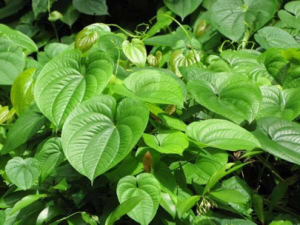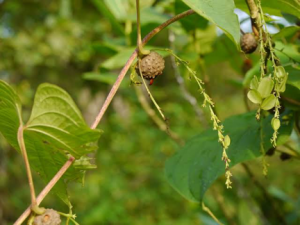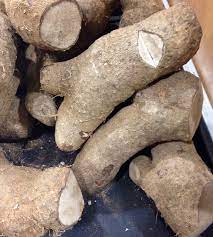BOTANICAL NAME: Dioscorea deltoidea
FAMILY: Dioscoreaceae
CLASSICAL CLASSIFICATION:
ENGLISH NAME: Nepal Yam
COMMON NAME:
Hindi: Gun, Kin, Singly-mingly



HABITAT: Its habitat is found ranging from 450 to 3100 m altitude. It is found in forest clearings, shrubberies, slopes and rocky substrates.
BOTANICAL DESCRIPTION: It is a perennial climber and is found growing upto 3m in height. It is a hairless vine that is twinning clockwise. Rhizomes are irregular, horizontal and alternately arranged. They may resemble ginger like shape. Stem is also twining, have a purplish brown to brown groove. Leaves are triangular ovate, long pointed, often heart-shaped, 7- 9 nerved, hairless on upper side and velvety on the nerves beneath. Flowers usually are small. Capsule usually may be reflexed brown at maturity and purplish brown spots are observed. Capsule is oblong-ovoid or globose with rounded base and emarginated apex. Flowering occurs usually in May to June and fruiting occurs from June to September.
AYURVEDIC CHARACTERISTICS:
| RASA | GUNA | VEERYA | VIPAKA | PRABHAVA | DOSHGHNTA |
| Madhura, katu | Laghu, Snigdha | Ushna | Katu | – | Pacify vata- kapha dosha, aggravates
pitta dosha |
AYURVEDIC ENERGETICS:
| TASTE | PROPERTY | POTENCY | POST DIGESTION EFFECT | ACTION | DOSHA ACTION |
| Sweet, Astringent | Light, Unctuous | Hot | Pungent | – | Balances vata and kapha,
Increases Pitta |
MAJOR CHEMICAL CONSTITUENTS: Diosgenin, smilagenone, stigmasterol, B-sitosterol, dioscorin, dioscin and campastrol
THERAPEUTIC USES:
- Krimi: The juice of the root tuber is taken in the evening in the treatment of roundworm.
- Fever: Its powder is orally used with luke warm water.
- Skin diseases: Tuber powder is to be applied externally.
INDICATIONS:
Prameha Diabetes mellitus, Twaka roga Skin disorders, Krimiroga Intestinal worms, Udara shoola Abdominal pain
USEFUL PART: Tuber
DOSAGE: 3-6 g per day
Habitat: It is found in altitudes ranging from 450 to 3100 m.
